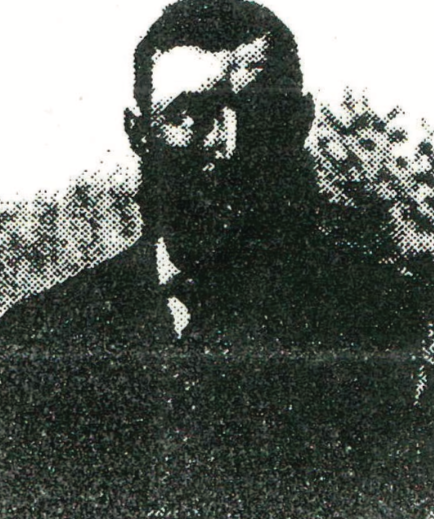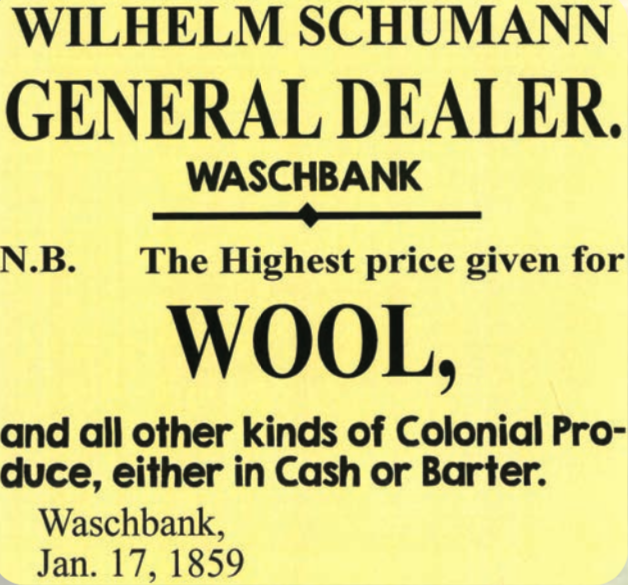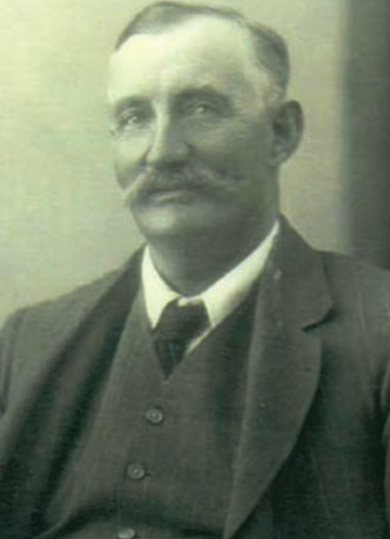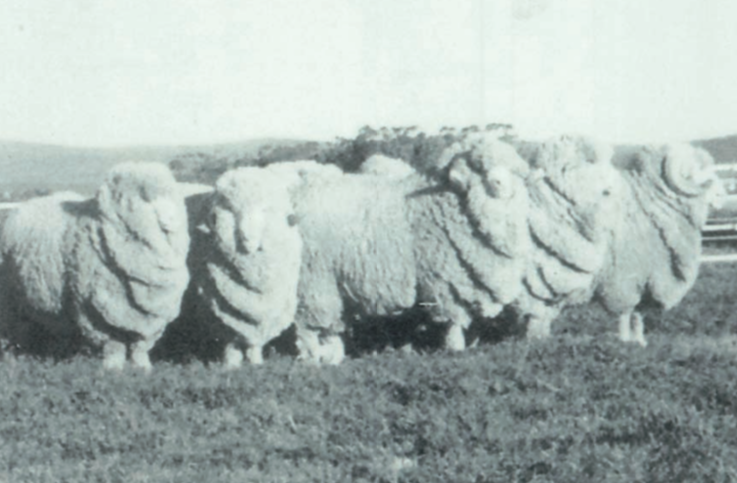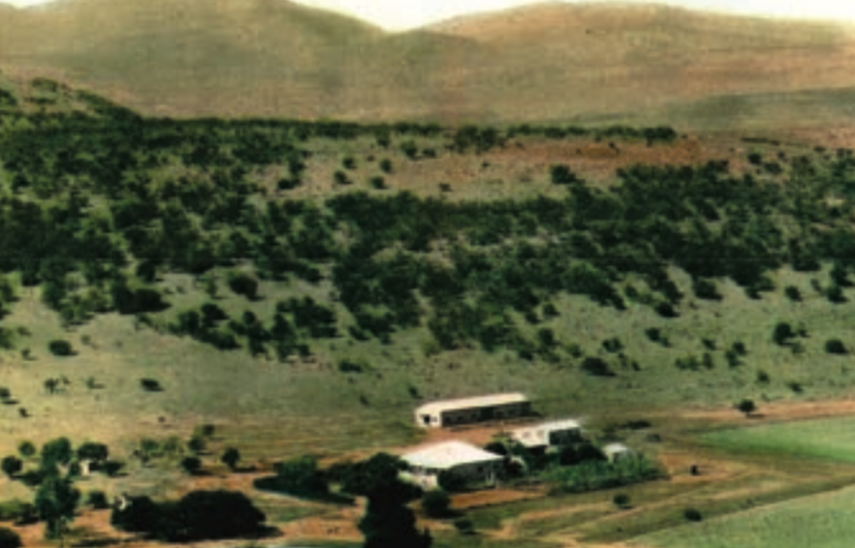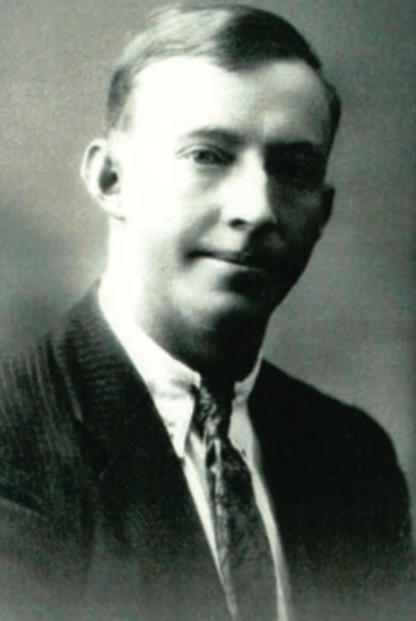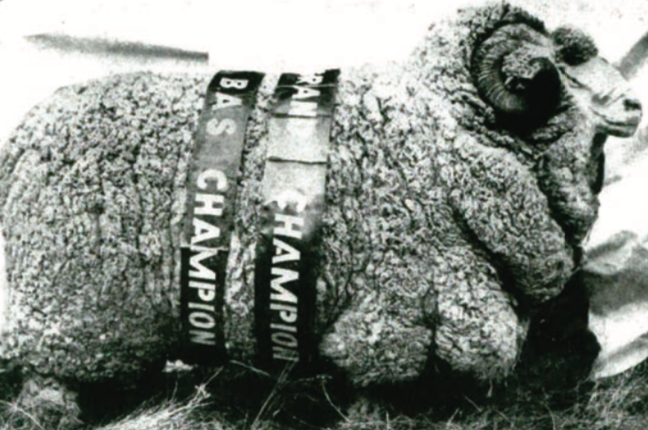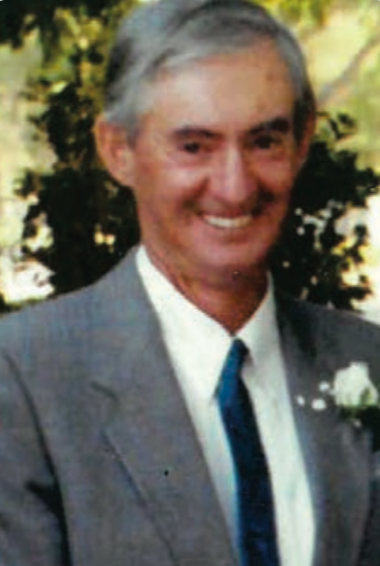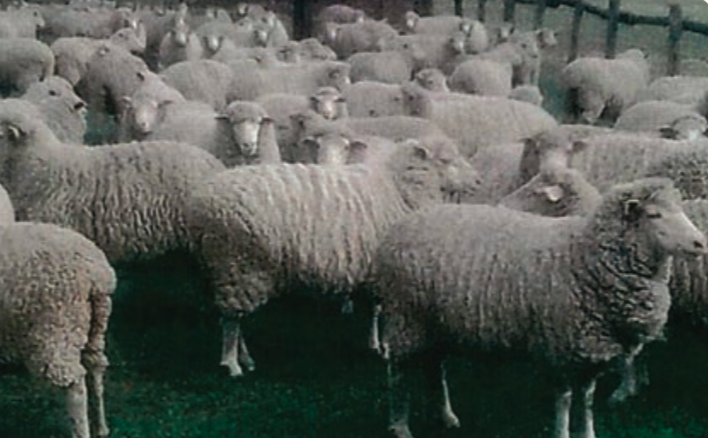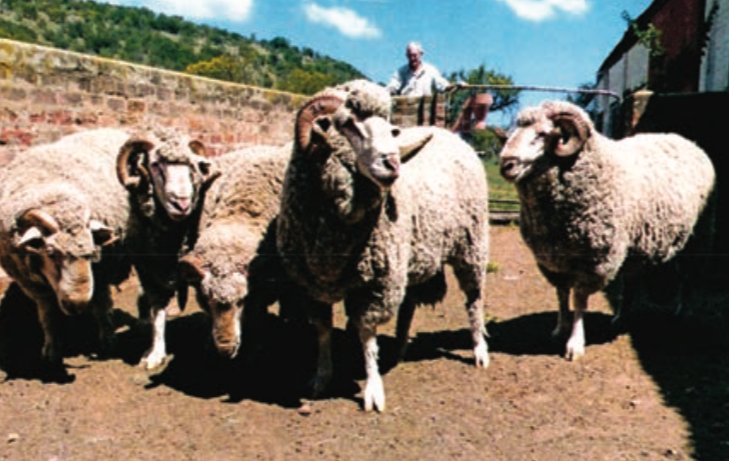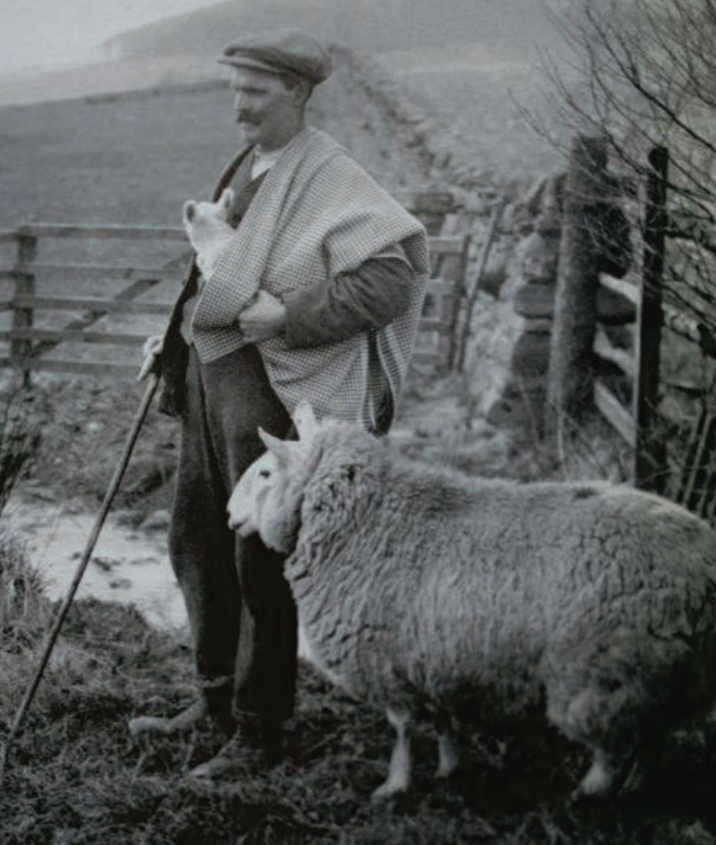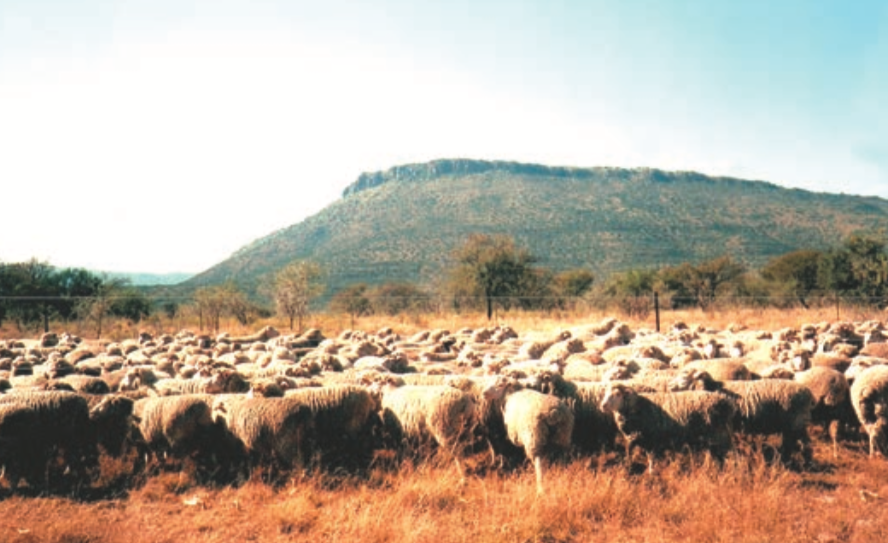
Disclaimer: Any views expressed by individuals and organisations are their own and do not in any way represent the views of The Heritage Portal. If you find any mistakes or historical inaccuracies, please contact the editor.
Towards the end of 2013, veteran sheep farmer, Hilson Shuman of Grey Craig farm, near Queenstown in the Eastern Cape, made South African Merino history when he delivered his 60th wool clip to Lappersonne Wools broker in Port Elizabeth. In 2016, he broke the World Wool Clip record with 63 clips behind his name. In 2018, Hilson continued his record streak with a 65th Wool Clip. The National Woolgrowers Association (NWGA) and all affiliated sectors joined together to congratulate Hilson on this unique achievement. In celebration of this, a remarkable phenomenon of dedication, it was decided that this article would showcase one of South Africa's most fascinating Merino farming histories. Click here to view original article.
A Description of the Merino by T.P. van der Walt
A Merino is a type of sheep possessing as to form a certain fixed set of composite physical characteristics in accordance with the required background of Life: this is constitution. At the same time, it possesses the additional quality of yielding a valuable fibre, namely wool. All of this has been harmonised to justify and make possible its existence. Therefore, these characteristics can never be approached separately from each other.
It cannot be otherwise. Constitution which, in other words is life, the foundation of our breeding. This is the most sort after characteristic which supplies the whole of the infallible background of the scientically required wool fibre. In other words, without the animal's constitution there can be no question of a desirable wool fibre.
Wool grows from the flesh, from the circulation of blood, from the whole structure of the sheep.
The Shuman family have been farming with Merino sheep for four generations. Hilson displays a magnificent lineage of descendants who all made their mark as renowned sheep farmers.
A Pioneering Wool Baron
Baron Wilhelm Karl von Schumann is the great ancestor of the Shuman families, who today farm in the Queenstown district. He was a nobleman who emigrated from the German Kingdom of Prussia to South Africa in 1855.
Baron Wilhelm Karl von Schumann Cattle and Sheep Farmer (Vieh/Schaf Bauer) Wool Merchant and Washer (Wolle Kaufmann/Waschen)(Portrait - Monochrome Style -1865)
Wilhelm purchased the farm “Wasche-Erdwall” (named by him) in the Wodehouse district between Dordrecht and Elliot in the Eastern Cape. It was here that he became a cattle and sheep farmer as well as a merchant and washer. His merchandising firm was known as “Schumann & Co” and dealt mainly with wool from the Orange Free State. The origin of the name of his farm is very interesting. He set up a wool washing plant as a means of getting the wool into a fit condition for export. This led him to name his farm “Wasche-Erdwall”. The German words “Wasche” meaning to wash and “Erdwall” meaning a bank, referring to the wool washing plant on the river bank. Today his farm, the river and the surrounding area are known by the name “Waschbank”, the word “Wasche” has been retained, however the letter “e” has been dropped and “Erdwall” replaced by its English translation “bank”.
An advert from the “Free Press”, Queenstown's first newspaper
Wilhelm encouraged German investment in Cape Wool and it was through him that the Hamburg brokers, “Lippert and Co” built up a lucrative connection as wool importers. As a pioneer he developed new techniques when it came to sheep and wool farming. He was also an authority, with recognised expertise, teaching farmers on how to tend and shear their flocks. In 1863, Wilhelm together with a group of farmers and businessmen launched a joint stock company in Queenstown to import pure bred Merino stock from Germany. The imported rams and ewes were sold to Eastern Cape farmers, significantly improving local flocks.
With a courageous spirit, Baron Wilhelm Karl von Schumann played a major role in the development of agriculture in South Africa.
Wilhelm's only son, William Arthur Shuman (Hilson's grandfather), was raised by his grandparents, Uriah and Johannah Dicks, who did not want a German surname for their grandson. In 1873, they omitted the preposition “von” as well as the “c” and second “n” in Schumann, now called Shuman. As a result of this change, the prestigious title of “Baron” became obsolete.
In 1891, William established the Broman Merino stud on his farm, Brosdile in the Elliot district of the Eastern Cape. The Broman stud name became apparent from a combination of the first three letters of the farms name “Brosdile” and the last three letters of the surname “Shuman”. This stud became well known for its rams which enriched many flocks in the surrounding areas. The Broman ram was reported as being large and robust with a fine fleece of good weight.
William Arthur Shuman Born 1871 – Died 1937
The Elliot District has always had a very impressive Merino history. It is not surprising that this area can boast the third pure blood importation into the Eastern Cape. In 1895, William imported five Merino rams from Mr Sturgeon's farm, “The Elms”, which is in the Grays district of the Essex county in England. These rams were descended from the flock of King George III. His decision to import was described as a dynamic example, as the improvement of local flocks could only benefit the farmers.
William moved his farming operation from Elliot to Queenstown in 1918, after buying the farm “Strydfontein” in the Bolotwa district. He left his youngest son, William Kenneth Shuman (Hilson's father) to begin his profession as a farmer on Brosdile. Strydfontein, with its “sweetveld” was ideally suited to sheep farming. Due to this, the Broman stud flock prospered and soon William became one of the most extensive sheep farmers in the Queenstown district. As Queenstown is a prominent wool producing area, the question is sometimes asked: What is the largest crop of lambs ever bred or at least dropped in one season? Figures are not immediately accessible but competent authority indicates that 1923 was the year, and William Shuman, the breeder. In that noteworthy year Shuman recorded a crop no less than 4 275 lambs. This is indeed a staggering total and whoever sought to better it would have to advance to astronomical figures. This occured as a result of the Shuman farming business known as “Shuman & Sons” - William had three sons, namely: Reaford Stanley, Ernest Fletcher and William Kenneth.
Royal Merino Import United Kingdom - South Africa (1895). Five rams imported by William Shuman, he describes them as having strong builds and fine fleeces. In 1891, Shuman was presented with a “Sturgeon” photographic advert. This led him to make enquiries about importation. “Sturgeon & Sons” quoted the following about their rams “The progeny of a Sturgeon ram is found to do well in all hot countries, their thick fleece enables them to resist sun better than wet. One great feature of this flock is the strength and evenness of the wool”
Historical Grey Craig
This farm was surveyed and named in 1859 by Alfred Murray, a Scottish land surveyor with the Cape Government. Surveyed as a piece of land containing 1 463 (one thousand four hundred and sixty three) Morgan and named “Grey Craig”. The origin of the name is as follows: “Grey”, a colour between black and white, pertaining to the cliffs and “Craig”, the name traces back to the Gaelic word “creag”, which was a term for a rocky cliff. The English word “crag” comes from the same root. “Grey Craig” was granted to George Morris in the name of Her Majesty Queen Victoria and by His Excellency Lieutenant Robert Wyngaard, administrator of the Government of the Colonies of the Cape of Good Hope. Grey Craig has an interesting farming history, having been inhabited over the years by three families who were all sheep farmers.
A picturesque farm with its mountainous “sweetveld” and the Black Kei river which winds its way around the farm like a serpent, rocky cliffs determining its curvaceous course as it forms the boundary between the Queenstown and Cathcart districts. (Aerial photo – 1945)
The Morris Family 1859 – 1868
George Morris acquired the farm from the Government and paid a quitrent of £6 (six pounds) a year. He began his flock when he bought Saxon Merino's on an auction in Graaff-Reinet. The Saxon type was originally imported from Germany to South Africa in the 1840's. It was reported in 1863 that Grey Craig was already well stocked with sheep, the hillsides covered with these small and hardy animals.
The Fletcher Family 1868 – 1928
Joseph Fletcher purchased the farm from George Morris and paid £500 (five hundred pounds). The Fletcher's were the owners of fine flocks which yielded desirable wools. They said sheep farming on Grey Craig was an uphill battle, because of periodic droughts and the jackals which played havoc with their sheep. After Joseph Fletcher's death in 1891, the farm was subsequently worked by his sons John and Reuben, as well as Reuben's son Joseph (known as Joe).
The Shuman Family 1928 - to date
Joe Fletcher and Ken Shuman, cousins, swopped farms after an agreement was reached. Joe moved to Ken's farm Brosdile in the Elliot district and Ken moved to Joe's farm Grey Craig in the Queenstown district.
This is the cliff that gave Grey Craig its name. Craig was used as a surname in Scotland – it was a topographic surname given to people who lived near a rocky hill or cliff, also known as a “creag”. Usage as a first name began in the 20th century.
William's third son was William Kenneth Shuman (Hilson's father). Ken had a great love for sheep, running a large flock of exceptional Merino's. The Grey Craig Merino was defined as having the advantageous qualities in its fine fleece and lusty stature.
William Kenneth Shuman Born 1904 – Died 1952
Being a progressive farmer, he set about developing Grey Craig, and over a span of a few years, Ken built a bridge and weir across the Kei river as well as a country house and shearing shed. In 1925, he founded The Queenstown Pioneers, a farmer's association in the border area, which was instrumental in encouraging farmers in other areas of the Eastern Cape to form such associations, highlighting their importance for future generations of farmers in South Africa. Ken together with his members, who were all exhibitors of Merino’s, decided to hold a special exhibition each spring. The success of these shows was phenomenal from a technical point of view, attracting all the foremost breeders, and was ranked among the most leading sheep shows of the Union of South Africa.
In the 1930's, Ken believed that Merino’s had the potential to bring untold wealth to the average farmer. He would often tell friends that “a sheep’s hooves are lined with gold”. As Chairman of the Border Woolgrowers Association in 1945, he started wool schools in collaboration with the Division of Soil Conservation and Extensions. In 1950, his prediction became a reality when a major “wool boom” brought unthinkable wealth to farmers. During this “boom”, he received top price among the South African offers at the London sales – this lot being sold at 90d per pound.
Sheep shearing on Grey Craig was always one of the main tasks on the farming calendar. On completion, Ken's wool clip (bales) were loaded onto a wagon drawn by oxen and carted to the nearby station. The wagon with its heavy load, left wheel indentations on the tar road, which could be seen for many years after, reminding one of the “Good Old Days”.
“Handsome” - Grand Champion Ram Border Agricultural Show – Queenstown (1946). Grey Craig Merino sheep were titled as “South Africa's royal flock”. The owner, Ken Shuman who corresponded with King George VI and Queen Elizabeth had invited the royal couple to his farm in 1950, to see his flock, this visit did not occur due to the King's ailing health and subsequent death in 1952.
A Passionate Sheep Farmer
In 2018, Hilson Shuman became the holder of the World Record 65th Wool Clip title, a feat that no other producer can lay claim to. He is as devoted to his Merino's today as he was in 1953 when he began his agricultural career on Grey Craig farm near Queenstown.
Hilson Kenneth Shuman Born 1934. Motto: “To labour towards heights with purpose true, and if I fail, to rise and try again”
The Grey Craig Merino is an indigenous type, which is evolved specifically for our environmental conditions. Emphasis is placed on the best balance between true fine wool and top quality mutton. This Merino type is an early maturing large frame and relatively plain bodied sheep, producing a fleece of which is soft handling and of a good colour. It is extremely hardy and even manages to produce on relatively sparse grazing. Mature rams under veld conditions weigh between 80 to 100kgs on average. The rams are put to the ewes at an early age and they remain active until the end of their life span. Fully grown veld reared ewes weigh on average between 55 and 60kgs each, and they yield 4 to 7kgs of super fine wool per shearing. They are exceptionally fertile and drop a high proportion of twin lams – the ewes give birth to fairly small lambs which grow out rapidly. Any lambs finished for slaughter are generally ready for marketing at about 5 months of age. Weaning rates vary from 130 to 50%. Rams and ewes remain, on average, fully productive for up to ten years.
The prices paid for this breed’s first rate wool on the open market are invariably among the highest in the country. Its degree of fineness ranges from 16 to 19 micron and in tests involving sixty rams, an average of 17.1 micron with a scratch factor of 0.05% was recorded. Only rams with a zero scratch factor are used.
After 65 years of constructive breeding, Hilson is convinced that his Merino is indeed a specific type which can without fail, transmit the desired criteria of a sturdy body, quality wool and superb mutton. Today the Grey Craig Merino is described as a sheep of outstanding calibre which is bred under natural veld conditions in the Queenstown district.
A typical flock of Grey Craig Merino ewes (2018)
With diligence and determination, Hilson, the stockman and his wife, Isabel, the businesswoman, as well as their son, Kenneth (named after his grandfather) and daughter, Elizabeth, together with her husband, Stuart Reid, have all complimented one another in building a very successful farming concern, (Stu and Liz have always taken a keen interest in the farming, even though they live in Cape Town).
Merino sheep have always been central to the Shuman's Agricultural Initiative
Conclusion
Here is a touching poem which was presented to Ken Shuman (Hilson's father) by the National Woolgrowers Association (NWGA) of the Union of South Africa, after his term of office as Chairman of the Border Woolgrowers Association. (1945)
The Shepherd by William Blake
How sweet is the shepherd's sweet lot!
From the morn to the evening he strays;
He shall follow his sheep all the day,
And his tongue shall be filled with praise.
For he hears the lamb’s innocent call,
And he hears the ewe’s tender reply;
He is watchful while they are in peace,
For they know when their shepherd is nigh.
Shepherd in Scotland
About the author: Magdalene Morse-Jones is an Historian and Genealogist
Comments will load below. If for any reason none appear click here for some troubleshooting tips. If you would like to post a comment and need instructions click here.

